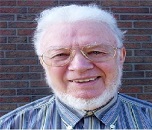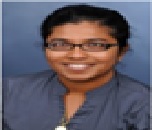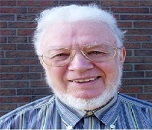Day 2 :
Keynote Forum
Gerd Kaupp
University of Oldenburg, Germany
Keynote: Much higher resolution below the diffraction limit than the more recent stochastic techniques for unstained pristine materials

Biography:
Gerd Kaupp has studied Chemistry at the University of Würzburg, Germany and had Post-doctoral appointments at Ames, Iowa, Lausanne, and Freiburg i. Br, where he became appointed as Associate Professor. From there, he was appointed as full Professor at the University of Oldenburg in 1982. He guided a successful research group with various projects and cooperation with numerous industries and worldwide academic research groups. He has served as Guest Professor for three international universities. He is now a Retired Member at the University of Oldenburg and pursues his scientific interests also with consulting. His expertise is in chemical kinetics, laser photochemistry, waste-free benign syntheses and productions, solid-state chemistry, reactive milling, mechanochemistry, atomic force microscopy AFM, scanning near-field optical microscopy SNOM, nanoscratching, nanoindentation, standardization in nanomechanics, and bionics. He is serving as keynote speaker in these fields, published numerous scientific papers and books and is inventor of patents in solid-state and environmental chemistry.
Abstract:
Light-microscope resolvability is limited by the Abbe diffraction limit (about l/2, or 200 nm). The obvious choice to break that limit failed with aperture NSOM (near-field scanning optical microscopy) producing artifacts (7 types) with its hot probes. However, apertureless SNOM with sharply tapered uncoated dielectric tips (at high aspect-ratio) of shear-force atomic force microscopes succeeded, due to an unexpected physical effect: the strong reflection enhancement (2 to >50 fold, depending on material and dumping setting) of the light back to the illuminated quartz waveguide, occurring abruptly in shear-force distance. Different materials' properties provide chemical contrast on unstained real-world materials. Lateral optical resolution down to < 8.6 nm is achieved, which highly supercedes the possibilities of stochastic techniques such as STED, PALM, STORM, etc., achieving only slight submicroscopic optical resolution (100 nm region). Only the latter require chemical reaction with fluorescence dyes, which profoundly and thoroughly changes them (for example their hydrogen bonding, natural coiling, etc.) They obtain only the dyes' fluorescence and are exceedingly expensive. Nevertheless, the present hype on stochastic techniques appeared to forget about the more versatile, easy, and cheap direct apertureless SNOM capabilities for revealing much smaller details (e.g. sub-organelles) with the chemical contrast plus concomitant topography, and for urgent validity check of the stochastic conclusions. Only the well-preceding apertureless SNOM applies to all types of pristine flat or rough surfaces (dielectric, semiconductive, metallic, fluorescing, non-fluorescing, organic, biological) at optical resolution down to < 8.6 nm, and spectroscopic identification. All artifacts of metal-coated NSOM are avoided, and constant intensity measurements secure valid apertureless SNOM conditions. The enhanced reflected light has been diffracted for local Raman and fluorescence spectroscopy. Physical details and already available industrial applications are discussed. These cover nanoparticles, sub-organelle-features, blood-bags, diffusion coefficients, cancer detection/localization and dental-alloy nanopitting check. Nothing of that is available from the expensive stochastic techniques.
Keynote Forum
Prajnaparamita Dhar
University of Kansas, USA
Keynote: Interactions of nanoparticles with model lipid systems
Time : 11:05 - 11:50

Biography:
Prajnaparamita Dhar is an Associate Professor in the Department of Chemical and Petroleum Engineering. She has her Undergraduate and Master’s degrees in Physics from the University of Calcutta, and Indian Institute of Technology, Bombay, India and PhD in Chemistry from the Florida State University, USA. Her lab is focused on interfacial phenomenon in nanomedicine, with a particular focus on developing novel biophysical and biochemical tools to probe the physical rules governing the self-assembly and functioning of biological systems on the nanoscale, i.e., nature's intricate biological structures. In addition, her lab is also interested in designing efficient engineered nanocarriers of drugs that will work effectively within the body for specific treatments of diseased cells and tissues.
Abstract:
The use of colloidal particles for various drug delivery applications is ubiquitous in the biomedical field. However, the exact mechanisms of initial cell surfaces response to colloidal particles in the environment are not well understood. Using model lipid membranes, and soft and hard colloidal particles, we will present the interactions between cell membranes and nanoparticle based drug delivery vehicles with relevance to various different diseases. Particularly, we will demonstrate that these nanoparticles are capable of causing re-organization of lipids in model membranes, leading to the formation of lipid-raft like domains which influence cellular processes. Further, we will also demonstrate that both the physicochemical properties of the colloidal particles, as well as the composition of the model cell membranes modulate these interactions at the molecular level. A complete understanding of these interactions will enable the design of colloidal particles with the potential for therapeutic intervention at the cellular level.
- Emerging Trends in Nanotechnology | Impact of Nano Biotechnology | Regulation of Nanotechnology | Nano-Biomaterials
Location: 1

Chair
Gerd Kaupp
University of Oldenburg, Germany
Session Introduction
Ibrahim Ismail
Zewail City for Science and Technology, Egypt
Title: Synthesis, characterization and biocidal effect of copper nanoparticles

Biography:
Ibrahim Ismail has done his PhD from Tokyo Institute of Technology in 1999. He worked on Material Science and their applications in Environment and Energy fields in Tokyo Institute of Technology, Institute of Research and Innovation, Cairo University and Zewail City for Science and Technology. He published more than 70 articles, one book chapter and submitted one patent.
Abstract:
A chemical reduction method was used to produce highly stable and dispersed copper nanoparticles. In this method, copper salt (copper (II) chloride dihydrate; CuCl2.2H2O and copper (II) sulfate pentahydrate; CuSO4.5H2O) were used as precursor. L-ascorbic acid was used as reducing and capping agent. The effect of reaction time and molar ratios of L-ascorbic acid to copper salt on the size of copper nanoparticles were studied. The particle size and morphology of copper nanoparticles were measured by dynamic light scattering (DLS) and transmission electron microscopy (TEM). The results showed that increasing time of reaction and increasing the molar ratio of L-ascorbic acid to copper salt decrease the size of copper nanoparticles. The size of copper nanoparticles was found less than 10 nm and spherical in shape. The copper nanoparticles colloidal solution was kept in ambient conditions for more than three months but no change was observed. The use of L-ascorbic acid has the advantage of non-toxic, low cost and environmental friendly production process. Antimicrobial tests of copper nanoparticles were carried out on different types of bacteria (Gram-negative bacteria and Gram-positive bacteria) and fungi. The prepared aqueous solutions of copper nanoparticles were diluted to different concentrations and 10 μl of each dilution was spotted on the overlay of each bacterial culture by impregnating the as-synthesized copper nanoparticles using micropipette on paper discs. The minimum inhibitory concentration (MIC) is defined as the lowest concentration of each sample at which visible inhibition of bacterial growth was induced and zone of inhibition was measured after 24 h of incubation. After completion of the MIC assay, the minimum bactericidal concentration (MBC) was also assessed. The results showed that the copper nanoparticles exhibited antimicrobial activity and that the lower the particles, the higher the biocidal effect on both bacteria and fungi.
Biography:
Shaukat Ayesha has completed her BS in Electrical Engineering with specialization in Electronic Engineering from Dawood Collage Karachi in 2006. In 2007, she joined Balochistan University of Information Technology, Engineering and Management Sciences (BUITEMS) as a Lecturer. In 2010, she got Fulbright scholarship and did her Master’s in Electrical Engineering from University of Missouri Columbia, USA. In 2013, she rejoined BUITEMS as an Assistant Professor and is also Chairing Department of Electrical Engineering.
Abstract:
This study demonstrates the comparison of silicon nanowire field effect transistor (SiNWTs) and carbon nanotube field effect transistor (CNTFETs) using FETTOY, a nano device simulator. In this regard, effect of different structural parameters like oxide thickness, gate controlled parameter, thickness of dielectric material of all the structures are analyzed. Results of quantum capacitance, drain current v/s drain voltage, drain current v/s gate voltage, drain induced barrier lowering (DIBL), threshold swing, and injection velocity, on and off current and output conductance for each structure at different temperature will be discussed.
Solleti Goutham
Jawaharlal Nehru Technological University, India
Title: NO2 sensing properties of SnO2 prepared by green and chemical method
Biography:
Solleti Goutham has obtained his MSc (Nanoscience and Technology) degree in 2013 from JNT University Hyderabad, India. Currently, he is doing his PhD under the supervision of K V Rao from JNT University Hyderabad. His research topic is development of gas sensor by microbial biofilms with ferrite nano particles. His current area of research is chemiresistive gas sensors for detection of explosive and poisonous gases.
Abstract:
SnO2 nanostructure has been studied for gas sensing element as a nitrogen dioxide (NO2) detection application. These SnO2 is prepared by two different methods i.e., chemical and green method. The prepared material film coated top of the interdigitated electrodes (IDEs) by drop drying method were prepared to determine the gas sensing characteristics for the development of an toxic NO2 gas sensor. The prepared materials were introduced to oxidizing NO2 gas at room temperature. The response of these SnO2 material increase resistance and recommends their behavior as n-type semiconductor. The green method SnO2 sensor showed good response, sensitivity, selectivity, stability and reproducibility at 250ºC operating temperature towards 50 ppm of NO2. Therefore the green synthesized material is feasible to development with bio method of eco-friendly and cost-effective new device can be better over the conventional chemical method.
Giovana C Bodnar
Oklahoma State University, USA
Title: Antibacterial activity of biosynthesized silver nanoparticle against foodborne pathogenic bacteria Listeria monocytogenes

Biography:
Giovana C Bodnar is a PhD student from Londrina State University, Brazil, and she is doing an internship in Oklahoma State University. She had studied about natural antimicrobials against human pathogens and multi-resistant bacteria. She works with biological silver nanoparticle obtained from Fusarium oxysporum and eugenol. This study can help to develop another option for treatment. Her interest includes application of this compound which showed synergistic effects and the molecular interaction with bacteria.
Abstract:
Listeria monocytogenes is a Gram-positive human pathogen related to foodborne illness. The organism occurs widely in food, involving meat, poultry, and seafood products that are generally caused by cross-contamination of foods contacting L. monocytogenes-contaminated surfaces. The ability to persist in food-processing environments and multiply under refrigeration temperatures makes this bacterium a significant threat to public health. Food processors have relied on techniques, that include hand washing, high pressure sprays, hypochlorites, iodophores and quaternary ammonium compounds to reduce or eliminate microorganisms on food contact surfaces. Microorganisms that might be on the surface of equipment which may eventually come in contact with raw and processed food should be inactive and remove by these techniques. Even with the use of these techniques, bacteria can persist on equipment and surfaces used in the food industry and may survive for prolonged periods. The periodic problems with Listeria in foods, has stimulated research interest in finding natural and effective preservatives and increasing demand for better-quality disinfection methods due to microorganisms resistant to multiple antimicrobial agents. Silver nanoparticles biological synthetized (bio-AgNP) acts as an antimicrobial substance against a number of pathogenic microorganisms, including food-borne pathogens. The aim of this research was evaluate the antibacterial activity of bio-AgNP against foodborne pathogenic bacteria L. monocytogenes 99-38 strongest biofilm producer. Silver nanoparticle used in these tests were obtained after reduction of silver nitrate by Fusarium oxysporum. Microplate growth inhibition assay was used to verify the inhibitory action of bio-AgNP in different concentrations (1mM, 500uM, 250uM and 125uM) against L. monocytogenes. The results show that high concentrations are able to kill the bacteria, and lower concentration are able to extend the lag phase. Results showed the action of bio-AgNP against L. monocytogenes, suggesting their utilization in various applications particularly as antibacterial substance in food packaging, food preservation to protect against various dreadful foodborne pathogenic bacteria.
Zinetula (Zeke) Insepov
Purdue University, USA
Title: Surface Acoustic Wave Stimulated Charge Transport in Solids

Biography:
Zinetula (Zeke) Insepov is an adjunct professor in the School of Nuclear Engineering at Purdue University and a professor in the Department of Condensed Matter Physics at the Moscow Engineering Physics Institute (MEPhI). He is the chief scientist and head of the Nanosynergy Laboratory at Nazarbayev University. He has previously held positions at Albert Ludwig University of Freiburg, Kyoto University, Epion Japan, and Argonne National Laboratory. His research focuses on the fundamental physics of ion beam materials processing, including very-low-energy ion–solid interactions. He developed cluster ion beam interaction simulation programs based on molecular dynamics and Monte Carlo methods. He also predicted a new lateral sputtering phenomenon that is a driving force behind the efficient atomistic smoothening mechanism of surfaces irradiated by large gas cluster ions. Recently, he predicted a nanopumping effect and is developing a new device that allows pump gases and liquids via nanometer-scale channels.
Abstract:
Surface acoustic wave stimulated transport of charge carriers generated in semiconductors and dielectrics under the influence of light is of great interest for the increase of the solar cell efficiency. A prospective application of SAW in solar cells could provide a 90% increase of the cell efficiency. SAWs propagating in piezoelectric crystals (piezoelectric semiconductor GaN and GaAs crystals included) have opposite potential values in the SAW minima and maxima due to the piezoelectric effect. The charges are then transported by SAW to the solar cell exit at the sound speed. By applying SAW in solar cells, the area of charge “harvest” from the surface of a semiconductor structure or a piezoelectric crystal can be increased and, hence, the solar cell efficiency can be increased too. In this work, the excited charge carriers were transported to a few hundreds of microns using surface acoustic waves. To visualize the charge transport, the electron beam induced current method (EBIC) was used which permits the visualization of charge distribution on the crystal surface by measuring the current flowing through the sample. Charges introduced by the primary electron beam and those generated in the crystal subsurface area are distributed between SAW minima and maxima according to the potential sign and are then carried by SAW at the acoustic wave velocity to the current collector at the exit. The YZ-cut of a LiNbO3 crystal was used to visualize the acoustically stimulated charge transport. To register the charge transport a Graphene IDT (current collector) was fabricated on the LiNbO3 crystal surface. The Graphene film was formed on the crystal surface by the transfer technique and the initial Graphene was synthesized on the surface of a Cu foil or a Ni film by CVD. Charge distribution on the surface of the YZ-cut of the LiNbO3 crystal was simultaneously visualized by the EBIC method. An EBIC image on the crystal surface during SEM scanning was obtained by measuring the current on the Graphene collector. Fig.1 presents an image of the crystal surface obtained by the EBIC method. The period of the structure is 60 ïm, which corresponds to the SAW wavelength of λ = 60 ïm, i.e. charges are distributed between the minima and maxima of the SAW. A lighter contrast corresponds to positive charges and the darker – to negative charges. In the area of the Graphene current collector, current is distributed in accordance with the structure period. The period of the observed image is 120 ïm, which is a double period of the Graphene IDT. A periodic modulation of the EBIC contrast with the period of Λ = 60 ïm can be seen on the free crystal surface, which corresponds to the distribution of positive and negative charges between the SAW minima and maxima. In the area of the Graphene current collector, a periodic structure with the period of 120 ïm and of a very high contrast (ratio of minima and maxima) is observed, which conforms to the Graphene IDT registration of charges delivered by SAW. The coincidence of the distribution of periods of positive and negative charges with the maxima and minima SAW, and the immutability of the distribution around the SAW propagation tract indicate that the charges are transferred to the current collector output device with acoustic wave velocity SAW.

